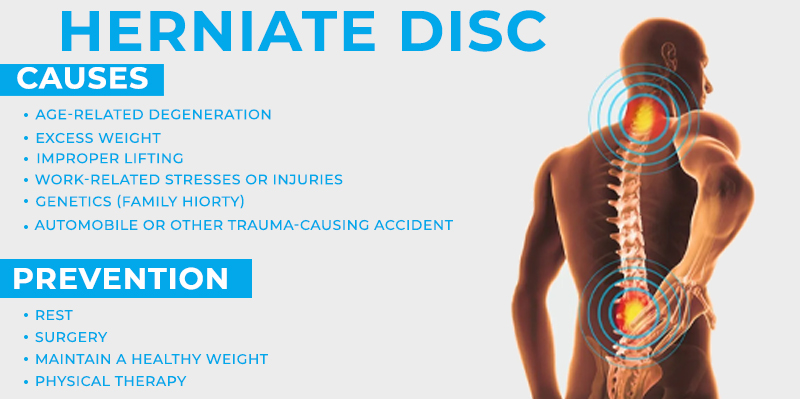If you’re a fitness freak, then you know how important it is to stay in top shape. But what happens when you suffer from a slipped herniated disc? This can be a debilitating injury that stops you in your tracks and prevents you from working out. In this blog post, we’ll provide a complete cure and diagnosis for this condition so that you can get back on the road to recovery.
With the right diagnosis and treatment, a slipped herniated disc doesn’t have to slow you down. With the help of your doctor and physical therapist, you can get back on track in no time.
What Is Herniated Disc Slip
Herniated discs are a common condition, especially among athletes and people who work out regularly. A slipped herniated disc occurs when the outer fibers of one or more of your spinal discs are ruptured, causing the soft inner material to leak out onto the nerve roots located near that area. This can lead to severe pain, numbness, and tingling, sensations in the affected area. Fortunately, there are a variety of treatments available to help you recover from this condition and get back into your regular routine.

Causes
The most common cause of a slipped disc is due to wear and tear on the spine, which can occur over time with age. Herniated discs are also more likely to occur if you have an active lifestyle or participate in activities that require repeated bending or twisting motions of the spine. Other causes include poor posture, obesity, and heavy lifting.
Symptoms
The most common symptom of a slipped herniated disc is lower back pain. This can range from mild to severe, depending on the severity of the injury and how it affects the nerves located near the area. Other symptoms include numbness or tingling in the affected area, muscle weakness, and difficulty walking or standing.
Diagnosing Herniated Discs
The first step to treating a slipped herniated disc is correctly diagnosing it. This can be done through a variety of imaging tests, such as an MRI or CT scan. These tests can provide doctors with a detailed look at the spine and help them to pinpoint the location of any herniated discs. Your doctor may also recommend other tests, such as a neurological examination or an electromyography test in order to rule out other potential causes of your pain.
Treating Herniated Discs
Once your herniated disc has been diagnosed, you’ll be able to begin the process of treating it. Depending on the severity of your condition, this could range from simple lifestyle modifications such as resting and avoiding strenuous activities to more involved treatments like physical therapy or surgery.
- Rest is often the best course of action when it comes to herniated discs, as this gives your body time to heal itself. You can also make lifestyle modifications such as changing your diet or quitting smoking in order to reduce inflammation and promote healing.
- Physical therapy is another option for treating a slipped herniated disc. A physical therapist can help you to strengthen the muscles surrounding your spine and improve flexibility, which can help reduce pain and speed up recovery.
- Surgery may also be an option for more severe cases of a herniated disc. This involves removing the ruptured disc in order to alleviate pressure on the nerve roots.
Symptoms
- The most common symptom of a herniated disc is a pain in the affected area.
- This can range from mild to severe and can be accompanied by numbness, tingling sensations, or weakness in the limbs.
- It’s important to pay attention to these symptoms and seek professional medical help if you experience any of them.
Prevention For Slipped Herniated Disc
In addition to treatment options, it’s also important to consider prevention strategies when it comes to herniated discs. Stretching and strengthening exercises can help to keep your spine in good condition while maintaining a healthy weight and can also reduce the risk of developing a slipped disc. Additionally, practicing proper posture while sitting or standing can help to prevent strain on your back.
By following these tips, you can help to lower your risk of developing a herniated disc and stay on the path to a healthier you. If you do experience any signs or symptoms of a slipped disc, make sure to consult with your doctor right away in order to get an accurate diagnosis and begin treatment.
FAQs
Has anyone ever recovered from a herniated disc and if so, how?
Yes, recovery from a herniated disc is possible. Treatment options like rest, lifestyle changes, physical therapy and in some cases surgery can help to reduce the pain and discomfort associated with this condition and get you back on track.
What exactly is a herniated disc?
A herniated disc occurs when one of the discs between the vertebrae of the spine becomes weakened and shifts out of place, leading to pressure being placed onto the nerve roots located near that area. This can lead to severe pain, numbness, and tingling sensations in the affected area.
How long does it take for a herniated disc to heal?
The amount of time it takes for a herniated disc to heal can vary depending on the severity of the condition. Generally speaking, most people will experience some improvement within a few weeks and complete recovery may take several months or more. It’s important to follow your doctor’s advice in order to ensure a safe and successful recovery.
Can physical activity make a herniated disc worse?
Yes, in some cases engaging in strenuous activities can make a herniated disc worse. It’s important to listen to your body and avoid any movements or positions that may cause pain or discomfort. If you are uncertain as to what activities are safe for you, consult with your doctor first.
